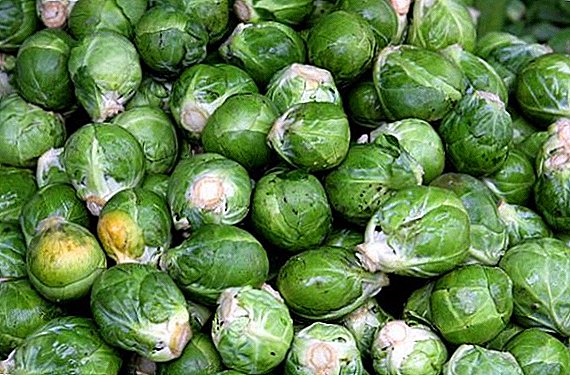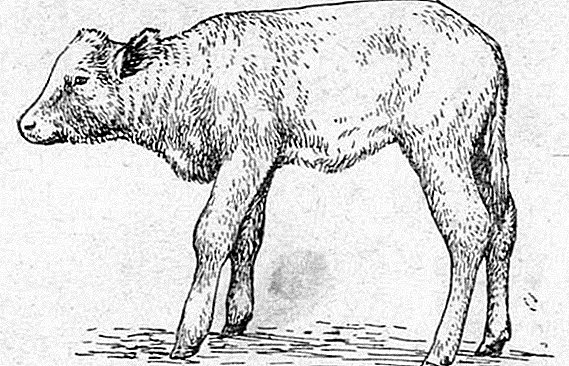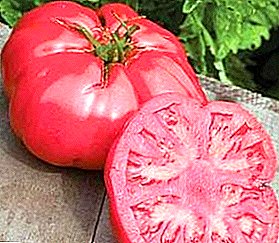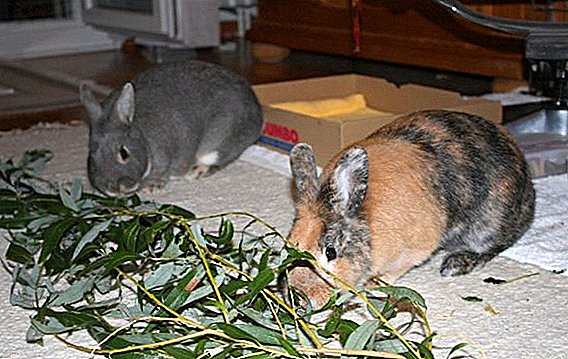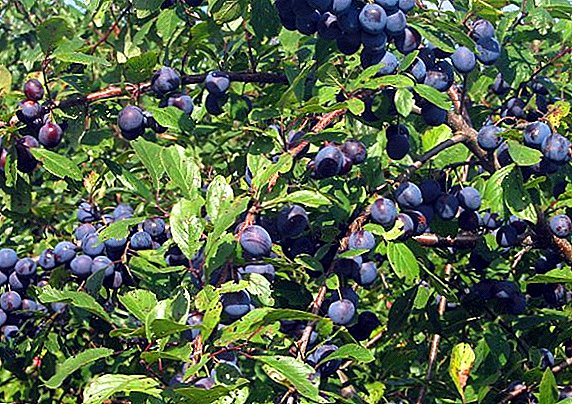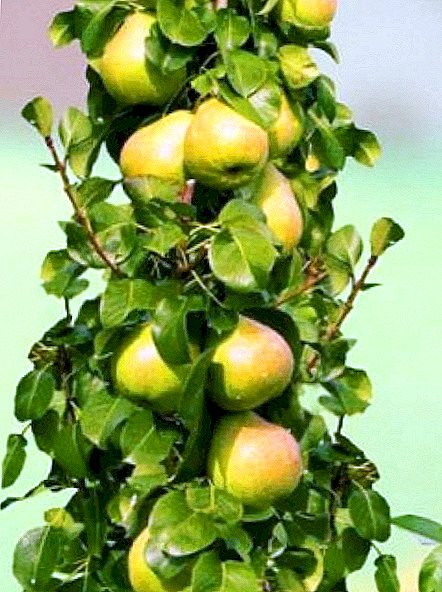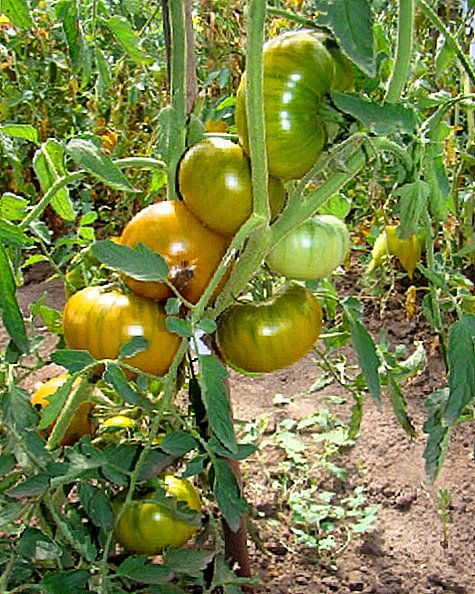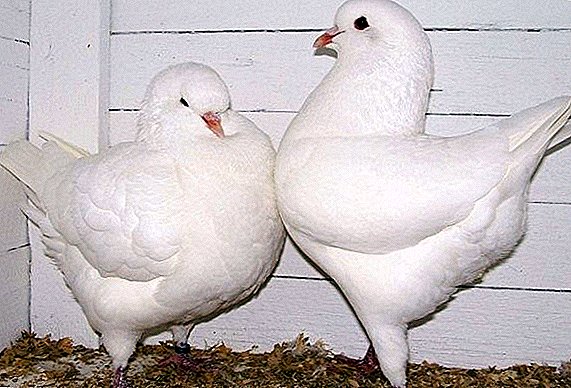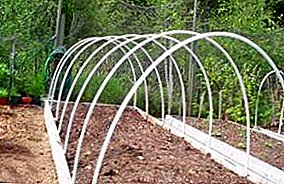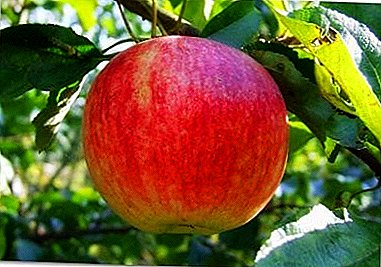
Apples of the "Autumn striped" variety are very tasty and well stored.
They are well tolerated transportation, preserve the original appearance, taste and smell for long days.
This apple tree also has the name Shtreyfling and Shtriepel, refers to the old autumn varieties.
Large, round-shaped fruits can be greenish-yellow or red with clearly visible vertical stripes and specks. The color of the bands is from orange to dark red.
Apples reach maturity in September.
Winter storage
For long storage, apples of the “Striped Autumn” variety are harvested from the tree by hand without removing the stem.
They are carefully folded in boxes, you can use wooden or plastic with good ventilation, or boxes of cardboard. It is best to wrap each apple in paper or lay them in layers, shifting each “floor” with paper.
During storage, no abrupt temperature changes should be allowed.
In a cellar or other place where apples are stored, the temperature should be near zero. It is permissible to store fruit in the house: in cool rooms or closets.
Pollination
Autumn striped refers to self-pollinated varieties.
At the same time, experienced gardeners advise planting other apple trees near trees of this variety, such as Cinnamon Striped, Antonovka, Papirovka and other similar varieties.
Variety description Autumn striped
 The trees are tall and powerful, with a wide crown up to 8 m in diameter.
The trees are tall and powerful, with a wide crown up to 8 m in diameter.
Leaves are rounded, markedly pubescent, large. The buds of the flowers are light pink, the rim of the open flowers is white, with rounded petals of the concave shape.
Fruit roundish, yellowish in color, with clearly visible red stripes. The final color is set no earlier than September.
There are red-fruited species, with a rather intense red skin.
Apples are yellowish-green in the future, during storage, lose their green tint and become even yellow. Taste with proper storage does not deteriorate.
The lower branches of saplings often need to be maintained.
The skin is smooth, with a thin wax coating. The flesh is light yellow, sometimes with a pinkish tinge, very juicy. The taste is sour-sweet. Seeds are large.
A photo
Below in the photo you can take a closer look at the autumn striped apple variety:





Breeding history
Sources of “Autumn Striped” are referred to as variety "national selection". Although the variety came to Russia from the Baltic countries, but there, apparently, from Germany, in European sources, this variety is often described as having Dutch origin.
Homeland and features of adaptation
Apple varieties "Autumn striped" come from the Baltic countries, so they need sufficient moisture of the earth and air. They do not tolerate drought and heat. In such periods, trees shed their leaves ahead of time, and the fruits become noticeably smaller.
Recommended abundant watering in dry and hot regions.
Frost-affected apple trees of this variety are subsequently well restored.
Yield
 In central Russia, it is necessary to apply a fertilizer complex in order to achieve high yields.
In central Russia, it is necessary to apply a fertilizer complex in order to achieve high yields.
In different regions, the yield from one tree averages 88-90 kg, the maximum yield is about 150 kg.
The highest yields are given by trees over 15 years old. In central Russia, apple trees aged 27–30 years can be harvested up to 300 kg of fruit from a tree.
Apples are harvested in early-mid-September, depending on the weather.
Organic and mineral fertilizers are applied to the soil.
Diseases and pests
Apple pests are diverse, in one region there may be about a hundred species. They spoil the buds, leaves or bark of trees, such as, for example, a hedgehog, or the fruits themselves.
Pests spoiled by apples cannot be stored. For minor injuries, they are cleaned and recycled first.
Diseases of apple trees, causing the greatest damage to the crop:
- fruit rot,
- scab,
- root cancer,
- black cancer trunks.
They are fought with chemical methods.
Of the pests, the greatest harm to the fruits is caused by:
- Codling moth,
- Sawfly.
The larvae of the codling moth penetrate the inside of the apple and eat the core. Then begin to eat the neighboring apples, so the harm from them is so noticeable.
The apple sawfly harms another. Because of him, apples can not ripen and fall from the tree green.
Larvae and pupae of this insect are largely destroyed if time to loosen and dig up the soil near fruit trees. For the destruction of adults use insecticides.
Crestling moth is most effective if carried out about three weeks after the apple trees have bloomed. Such means as benzophosphate, karbofos and other drugs are used. It is important to strictly observe their dosage and instructions for use.
 If the moth moth infestation is insignificant, then people use infusions of herbs: parsley or dill, wormwood, tansy.
If the moth moth infestation is insignificant, then people use infusions of herbs: parsley or dill, wormwood, tansy.
Spraying trees with herbal infusions sufficiently protects them from pests.
Insecticide pests such as apple aphid and apple beetle are also used to control insecticides.
Folk remedy against apple flowering bean - use on the trunks "belts" of the folded material The beetles which have got inside cannot get out, collect them several times a day and destroy.
If a gardener has noticed dry curled leaves on an apple tree, they must be harvested and burned: a harmful insect has probably been planted in them.
It is recommended to plant chamomile, garlic, marigold or other plants, such as celandine, tansy, among popular methods of repelling pests.
Gardeners highly appreciate the high yield and good winter hardiness of the autumn striped apple tree. Apples are beautifully stored, without losing flavor and taste.
Apples of the Autumn Striped variety are one of best varieties for making juices and delicious jam.


